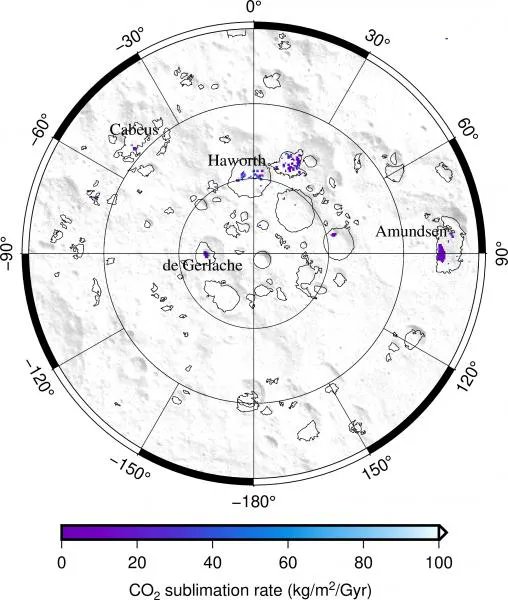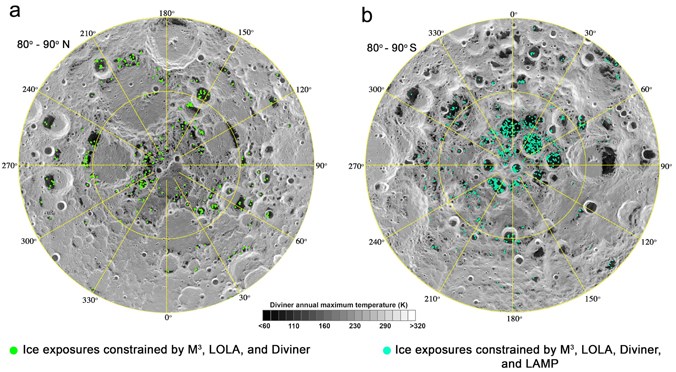Despite all its wonderful properties, water isn't the only resource needed for space exploration. Carbon is another important ingredient for many necessary materials, such as steel, rocket fuel, and biomaterials. Therefore, proponents of lunar exploration should be excited by a recent study led by Dr. Norbert Schorghofer of the Planetary Science Institute that found natural " cold traps " for carbon dioxide in some of the permanently shadowed craters of the moon.
Temperature data was the key to this new discovery. Dr. Schorghofer and his team scoured 11 years' worth of data from the Diviner Lunar Radiometer Experiment on NASA's Lunar Reconnaissance Orbiter (LRO). In particular, they were looking for how the temperature in lunar craters changed over time.
NASA video with impressive images from LRO collected over the years.Credit - NASA Scientific Visualization Studio YouTube ChannelWhile it might not be obvious to the casual observer, the moon actually has seasons, meaning its poles tilt slightly back and forth, just like Earth's do. In fact, a lunar year is almost the same length as Earth's, coming in at 347 days. And just like with Earth's season, there are temperature variations on certain parts of the lunar surface during certain parts of the year.
The data from LRO showed that while there was a small slice of the lunar summer every year where solid CO2 might be able to sublimate from these lunar craters, the vast majority of the time, they were able to maintain temperatures cold enough to keep CO2 frozen and protected. Perhaps more importantly, a relatively large area - around 200 square kilometers - maintained temperatures that low. One of the bigger slices of those areas was part of Amundsen crater, a relatively accessible crater whose temperature never tops -192 Celsius (-315 Fahrenheit).
However, the existence of a cold trap cold enough to solidify and keep carbon dioxide is not quite the same as saying there is actually solid carbon dioxide in these areas. Cold traps are typically used as part of a mechanical system designed to condense vapor into liquids or even solids. But they actually need the material they are designed for the trap to be present to work.
There is plenty of circumstantial evidence already for that, though. Theory and modeling predicted that CO2 would congeal in the areas the study was focusing on. And LCROSS, one of NASA's Lunar satellites that focuses on craters, detected CO2 vapor when it impacted the moon's surface and analyzed the resulting impact plume.
UT video describing the process of In-situ Resource Utilization, which could help mine any frozen CO2 found in lunar craters.We won't truly know until we go there, and Amundsen crater itself is one of the more intriguing places for lunar exploration, assuming researchers can develop technologies that work in such frigid temperatures. These latest findings give even more of an emphasis to work on doing so, though, as they may unlock a large amount of one of the solar system's most valuable resources.
Learn More:
PSI - CO2 Cold Traps Offer Potential Lunar Resource
Geophysical Research Letters - Carbon Dioxide Cold Traps on the Moon
AGU - CARBON DIOXIDE COLD TRAPS ON THE MOON ARE CONFIRMED FOR THE FIRST TIME
PopSci - Pockets of frozen CO2 on the moon could fuel future space travel
Lead Image:
Map of some of the areas on the lunar poles where solid carbon dioxide (purple/blue) and water (black outlines) should be found.
Credit - Norbert Schorghofer
 Universe Today
Universe Today

